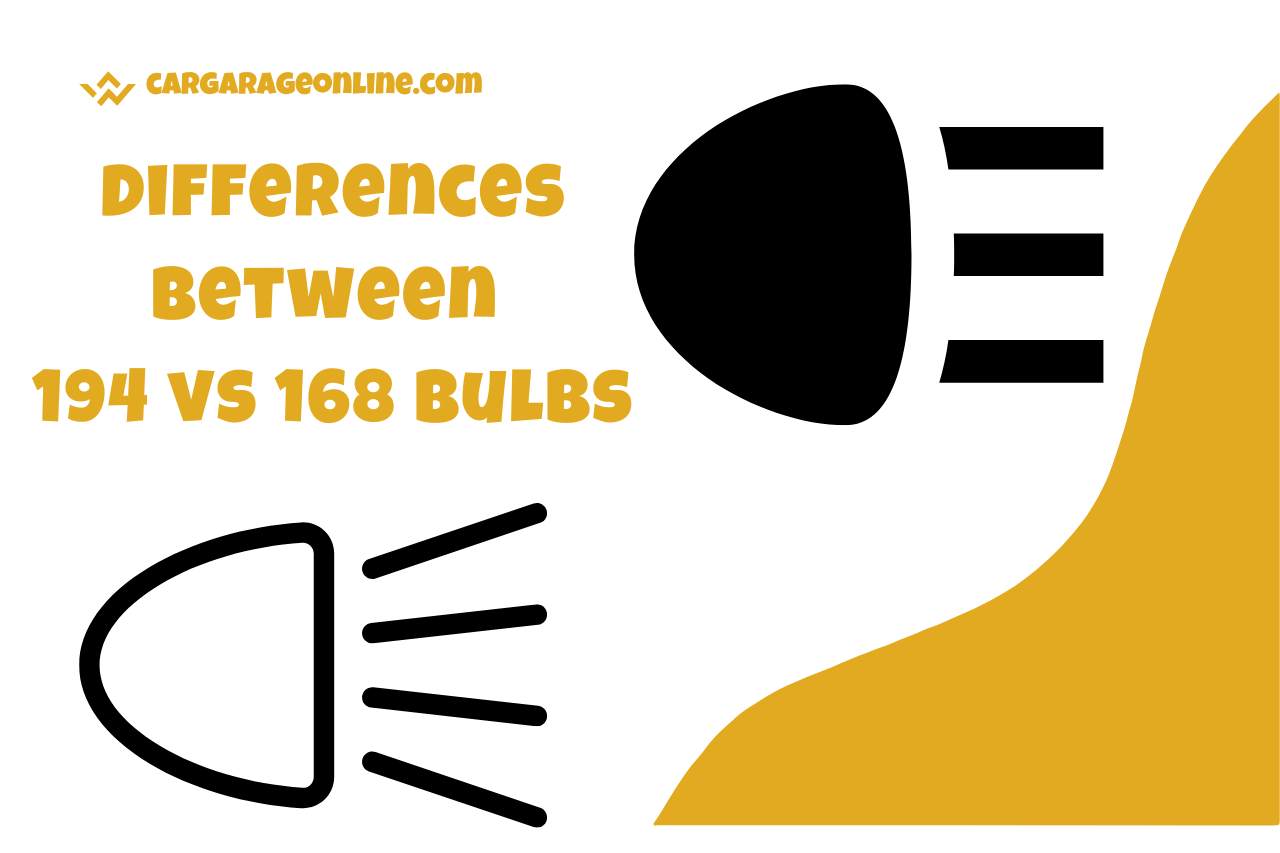The functionality and aesthetic of your car might change significantly depending on the automotive bulb you choose. Two commonly used bulbs, the 168 and 194, may look similar at first glance, but they possess distinct characteristics. In this article, we explore the main differences between these bulbs. When choosing the right bulb for your particular requirements, knowing this variation will help you make an informed choice.
What are 194 and 168 Bulbs, and Where are they Commonly Used?
The 168 and 194 bulbs are two of the most often-used options for vehicle illumination on the market. Despite their apparent similarities, they differ in important ways to affect their brightness, wattage, and longevity. these two bulbs are T10s, also called mini-wedge bulbs, are generally used for interior vehicle illumination.
The 168 bulb has a higher brightness level with a wattage of 4.9 and a light intensity of 3-candlepower. It is commonly used in warning lights, making it obvious when used as a signal. Its adaptability is increased because it can function at different brightness levels.
The 194 bulb produces less powerful 2-candlepower light and operates at a little lower wattage of 3.9. The 194 bulb makes up for its long lifespan of up to 2500 hours despite having a lesser brightness. It makes it the perfect option for applications requiring constant lighting.
While both have a T10 base and produce heat when used, the two bulbs have different functions. The 168 bulb is frequently used for warning lights due to its brightness. The 194 bulb is used for dome lights, glove box lights, reading lights, and even braking, backing up, and turn lights.
Users may choose the best lighting solution for their unique vehicle needs by being informed of the differences between the 168 and 194 bulbs. So, keep this lighting competitiveness on your mind the next time you’re in the market for vehicle bulbs and select the option that best suits your needs.

Differences Between 194 vs 168 Bulbs
The 168 and 194 bulbs are common options for vehicle lighting. But there are some significant differences between them. The 168 bulb has the highest lumens and a variety of brightness settings, making it the brightest of the bunch and ideal for warning lights.
The 194 bulbs are better suitable for continuous illumination applications like dome lights and license plate lights since they create a little softer light.
The wattage of the two bulbs also differs significantly, with the 168-bulb consuming more electricity (4.9 watts) than the 194 light (3.8 watts). The stronger illumination of the 168 bulb results from its higher wattage.
When checking bulb specs, the 168 bulb has a higher candlepower rating of 3, compared to the 194 bulb’s rating of 2. The 168 bulb lasts about 1500 hours with regular use. The 194 bulb compensates with a higher average lifespan of up to 2500 hours.
Both bulbs are almost identical in size and produce the same heat when used.
Price-wise, there is usually little difference between the two, though the brand may have an impact.
In conclusion, the 168 bulb excels in warning light due to its brightness and higher wattage. But the 194 bulb shines in continuous lighting scenarios due to its longer lifespan.
LED versions of these bulbs keep the same wattage and lumen differences, keeping the 168’s superior brightness to the 194’s.
Can the 194 and 168 Bulbs be Used Interchangeably?
The answer is yes. The 194 and 168 bulbs can be used interchangeably in some circumstances. Both bulbs can be used for interior illumination in cars because they have the same shape, size, and base.
They have significant brightness variations, with the 168 bulbs being brighter than the 194 bulbs. They can still be used reciprocally if it doesn’t matter for the particular lighting application despite this difference in brightness.
While they can be used together, it is important to consider their various light outputs depending on the intended use in your vehicle.
Which Is Brighter; 168 or 194 Bulbs?
The 168 bulbs are brighter than the 194 bulbs, as evidenced by their higher candlepower rating of 3 compared to the 2-candlepower rating of the 194 bulbs.
While in some circumstances, the change in brightness might not be immediately apparent. It becomes clear after the bulbs are installed, especially in applications that call for greater coverage, like interior illumination.
The 168 bulbs are preferable in situations where greater brightness is sought due to their increased candlepower.
Which Bulb Type Offers Better Energy Efficiency: 194 or 168?
Both energy conservation and energy efficiency have the same aim of reducing energy use. But their methods are different. People who follow energy conservation limit their use of energy-intensive appliances and reduce their driving and other energy-intensive activities.
Energy efficiency aims to avoid or minimize energy waste while keeping the same level of functionality. We are still allowed to use appliances, drive, and use lights while using less energy.
We may lower our energy use while maintaining the comfort and convenience of modern living by using energy-efficient devices and techniques.
What is the Lifespan and Durability of 194 and 168 Bulbs?
The 168 bulb lasts around 1500 hours when used regularly. The 194 bulb has a higher lifespan of 2500 hours under regular heavy usage. The 168 bulb is a little hotter than the other, but they both produce nearly equivalent amounts of heat.
How Many Lumens Is A 168 Bulb?
The 168 bulb emits 38 lumens of light compared to the 194 bulb’s 27 lumens, making the 168 bulbs brighter. The 2825 bulb has a lumen rating of about 41, which comes close to the 168 bulbs in brightness. The 168 bulb offers a higher lumen output than the 194 bulbs providing a brighter illumination. Lumens measure the quantity of light produced.
How Many Lumens Is A 194 Bulb?
Light output from a 194 bulb is 25 lumens. The 194 bulb gives a little less brightness than the 168 bulbs, which puts off 38 lumens. The two bulbs’ overall brightness levels differ because of their different lumen outputs, with the 168 bulbs being brighter than the 194 bulbs.
Watch this one,
Video Credits – Sergiu Gabor
You May Also Like







![What Is The Best Penetrating Oil For Seized Engine? [Explained] Best Penetrating Oil For Seized Engine](https://cargarageonline.com/wp-content/uploads/2022/07/Best-Penetrating-Oil-For-Seized-Engine-100x70.jpg)